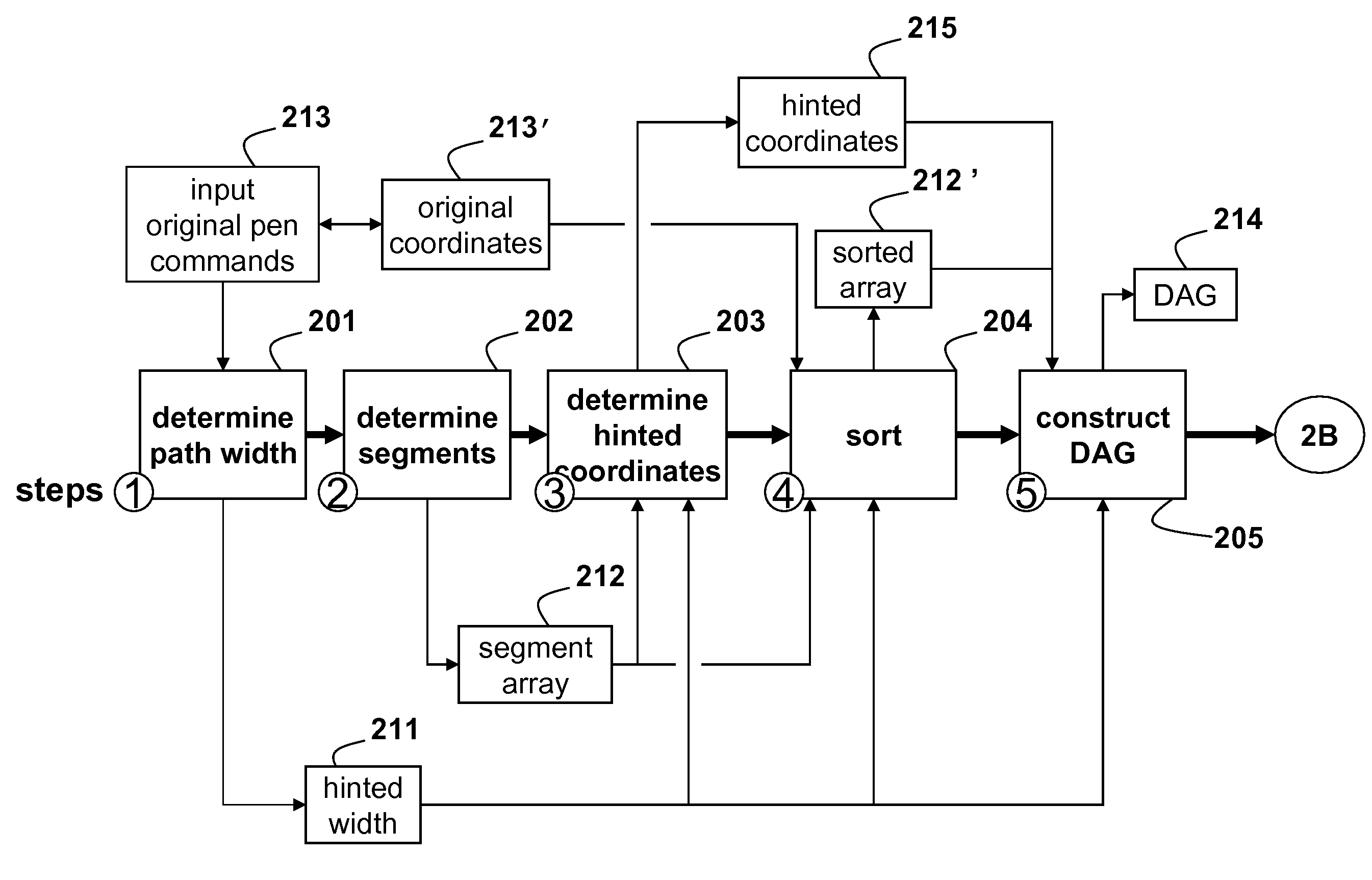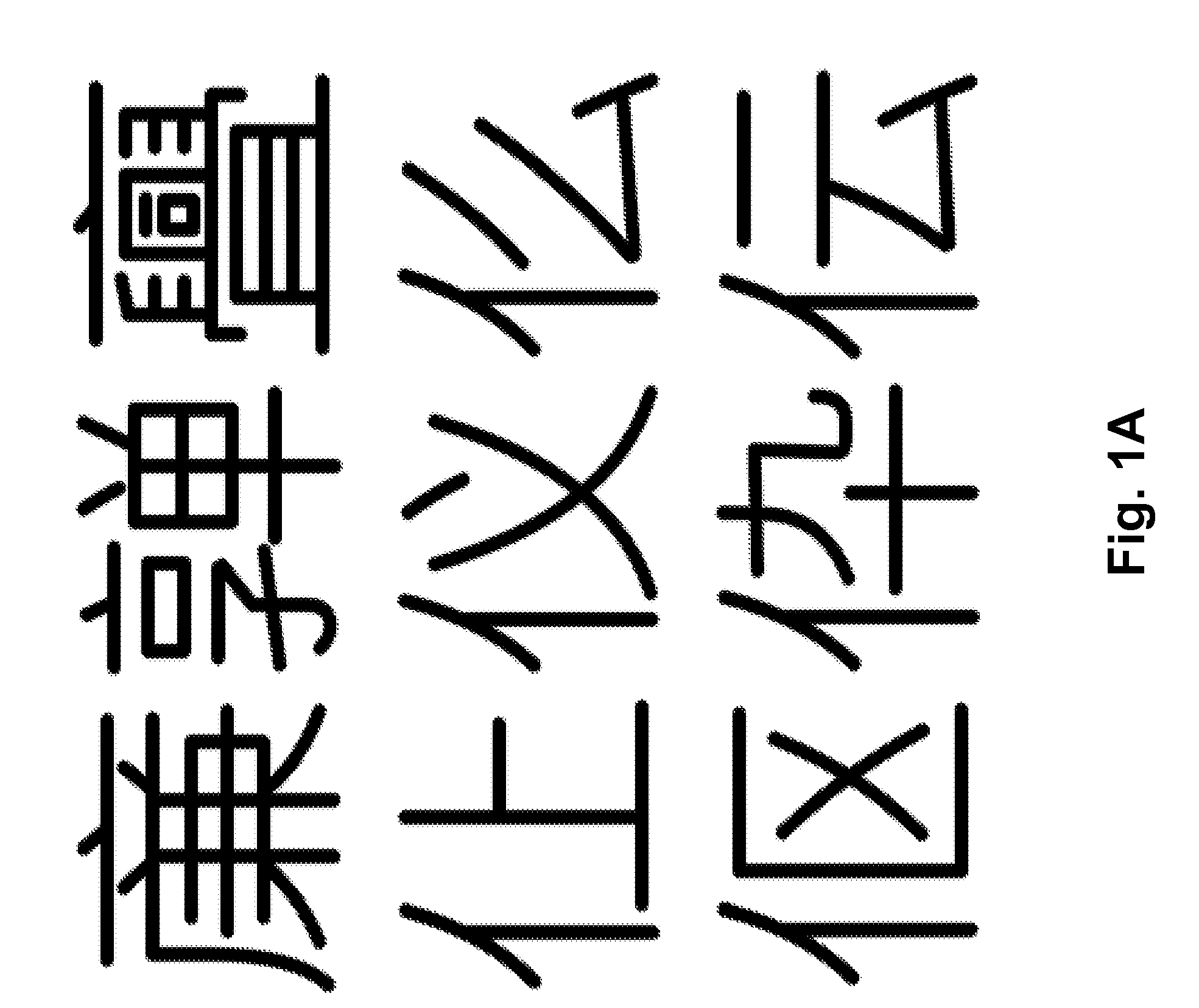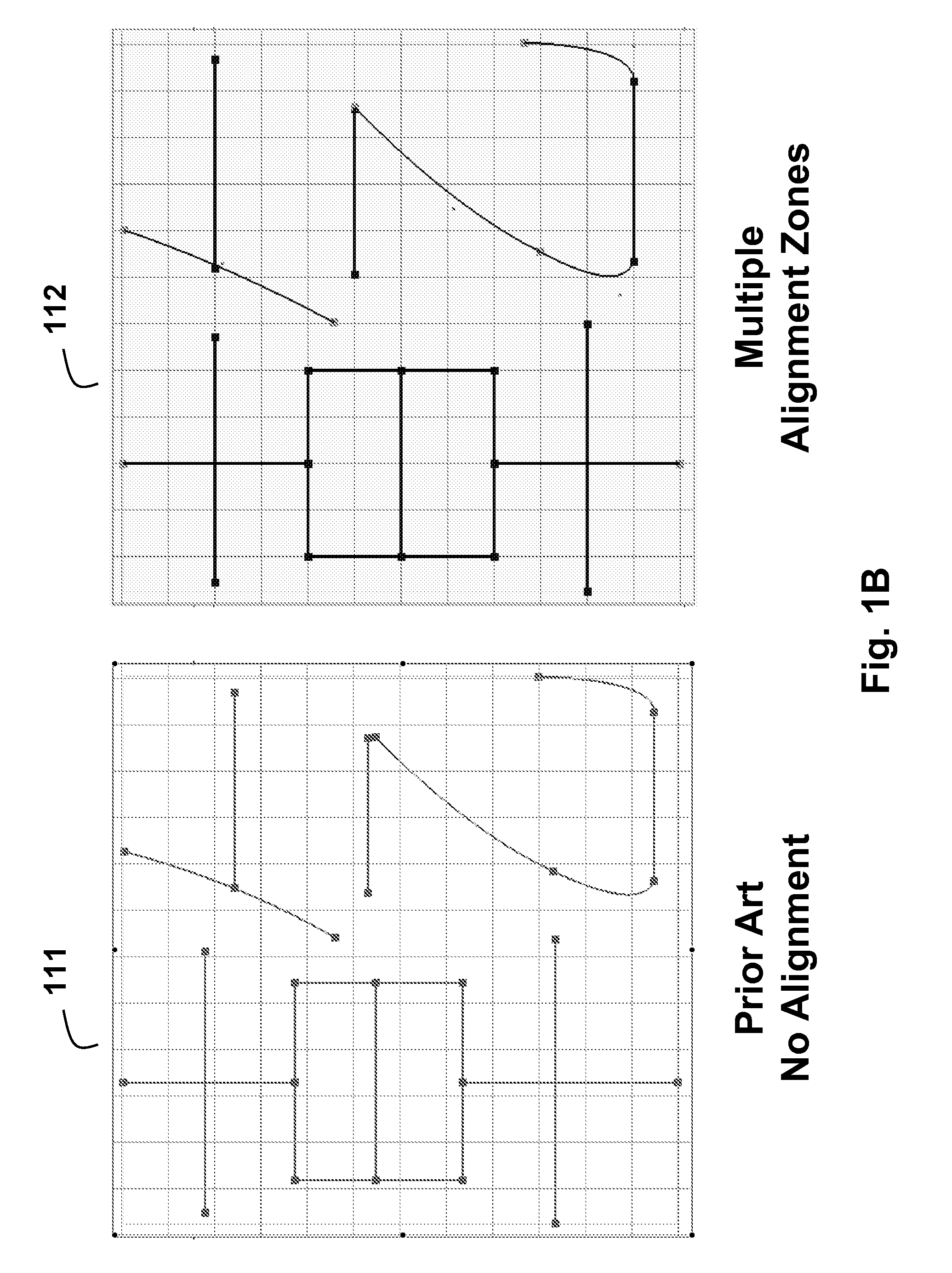Method for Improving Uniform Width Character Strokes Using Multiple Alignment Zones
a technology of uniform width and alignment zone, applied in the field of rendering characters, can solve the problems of wasting time, wasting time, and wasting resources, and achieve the effects of reducing labor costs, improving the rendering quality of body type, and effectively handling complex glyphs
- Summary
- Abstract
- Description
- Claims
- Application Information
AI Technical Summary
Benefits of technology
Problems solved by technology
Method used
Image
Examples
Embodiment Construction
[0018]Alignment and Grid Fitting
[0019]FIG. 1B shows a Chinese character on a sampling grid with no alignment 111 and alignment 112 according to embodiments of the invention. Because the invention detects and aligns multiple zones in a character, the method is called multiple alignment zones (MAZ).
[0020]FIG. 1C shows a character to be aligned according to embodiments of the invention. The character is represented by a path or skeleton 121. The path comprises pen commands, as described below. The pen commands specify (x, y) coordinates 122 of the path. A width 123 of the strokes is uniform.
[0021]As shown in FIGS. 2A-2B, a method for aligning characters to a sampling grid, (e.g., a pixel or sub-pixel grid of an image to be displayed on a screen) takes as input 213 pen commands that trace the skeleton of the character. The method modifies original coordinates of the pen commands to “hinted” coordinates.
[0022]Paths
[0023]Characters to be rendered are represented by a path. The path accord...
PUM
 Login to View More
Login to View More Abstract
Description
Claims
Application Information
 Login to View More
Login to View More - R&D
- Intellectual Property
- Life Sciences
- Materials
- Tech Scout
- Unparalleled Data Quality
- Higher Quality Content
- 60% Fewer Hallucinations
Browse by: Latest US Patents, China's latest patents, Technical Efficacy Thesaurus, Application Domain, Technology Topic, Popular Technical Reports.
© 2025 PatSnap. All rights reserved.Legal|Privacy policy|Modern Slavery Act Transparency Statement|Sitemap|About US| Contact US: help@patsnap.com



